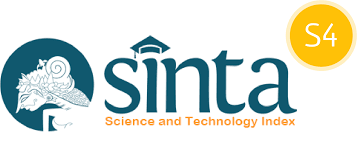Implementasi Algoritma Naive Bayes Untuk Memprediksi Predikat Ketuntasan Belajar Siswa Pasca Pandemi Covid 19
DOI:
https://doi.org/10.29408/jit.v4i1.2982Keywords:
Data Mining, Naive Bayes Algorithm, Learn Online.Abstract
During the Covid-19 pandemic, SMA Negeri 3 Selong changed learning activities from what was originally face-to-face, but currently learning is being transferred to the Online Learning System (SPADA) using several existing platforms. Judging from the level of plurality of students' thinking patterns during the implementation of online learning there are many problems that arise, one of which is the instability of the internet network, the various hendpone media devices owned by students and the lack of student knowledge in using online platforms. The purpose of this study was to determine the indicator of the problem in the predicate of student learning completeness of class XII SMAN 3 Selong during the post-COVID-19 pandemic. The method used to solve this problem is the Naïve Bayes algorithm. Naive Bayes is a method of probabilistic reasoning. And in the future the results of this study are expected to be able to provide the right solution in solving problems in online learning.
References
. S. Muhammad, “Klasifikasi Kinerja Dosen STT Hamzanwadi Menggunakan Naive Bayes Berbasis PSO,†vol. I, no. June, 2016.
.M. S. Silviana Damayanti, “Penerapan Algoritma Naive Bayes Untuk Klasifikasi Data Berdasarkan Usia Lanjut Di Desa Lekor Kecamatan Janapria Lombok Tengah.â€
.M. H. Rifqo and A. Wijaya, “Implementasi Algoritma Naive Bayes Dalam Penentuan Pemberian Kredit,†Pseudocode, vol. 4, no. 2, pp. 120–128, 2017, doi: 10.33369/pseudocode.4.2.120-128.
. Amri Muliawan, “Komparasi Algoritma SVM Dan SVM Berbasis PSO Dalam Menganalisa Kinerja Guru SMAN 3 Selong,†vol. 2, no. 2, pp. 15–16, 2019.
H. Ouassou et al., “The Pathogenesis of Coronavirus Disease 2019 (COVID-19): Evaluation and Prevention,†J. Immunol. Res., vol. 2020, p. 1357983, 2020, doi: 10.1155/2020/1357983.
Alimuddin and M. Saiful, “Implementation of the Neural Network (NN) Algorithm in Analysis of Student Class Increment Data Based on Report Card Value,†J. Phys. Conf. Ser., vol. 1539, no. 1, 2020, doi: 10.1088/1742-6596/1539/1/012034.
H. Ouassou et al., “The Pathogenesis of Coronavirus Disease 2019 (COVID-19): Evaluation and Prevention,†J. Immunol. Res., vol. 2020, p. 1357983, 2020, doi: 10.1155/2020/1357983.
N. Chen et al., “Epidemiological and clinical characteristics of 99 cases of 2019 novel coronavirus pneumonia in Wuhan, China: a descriptive study,†Lancet, vol. 395, no. 10223, pp. 507–513, 2020, doi: 10.1016/S0140-6736(20)30211-7.
Amrin Amrin, “Data Mining Dengan Algoritma Apriori untuk Penentuan Aturan Asosiasi Pola Pembelian Pupuk,†Paradigma, vol. XIX, no. 1, pp. 74–79, 2017, doi: https://doi.org/10.31294/p.v19i1.1836.
N. Pransiska and A. H. Mirza, “Bina Darma Conference on Computer Science Penerapan Data Mining Prediksi Penjualan Barang Elektronik Terlaris Menggunakan Algoritma Naïve Bayes ( Study Kasus : Planet Cash And Credit Cabang Muara Enim ) Bina Darma Conference on Computer Science,†pp. 2157–2169, 2016.
Downloads
Published
How to Cite
Issue
Section
License
Semua tulisan pada jurnal ini menjadi tanggung jawab penuh penulis. Jurnal Infotek memberikan akses terbuka terhadap siapapun agar informasi dan temuan pada artikel tersebut bermanfaat bagi semua orang. Jurnal Infotek ini dapat diakses dan diunduh secara gratis, tanpa dipungut biaya sesuai dengan lisense creative commons yang digunakan.
Jurnal Infotek is licensed under a Creative Commons Attribution 4.0 International License.
Statistik Pengunjung




